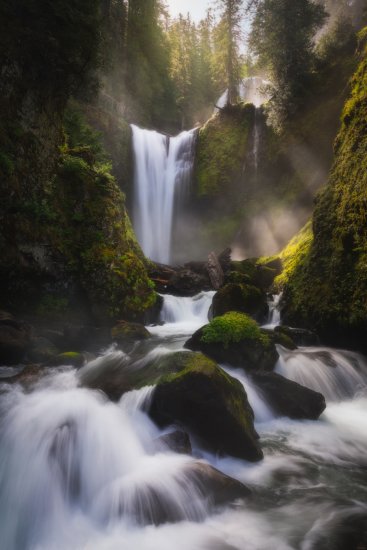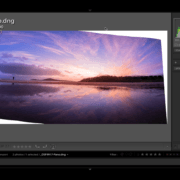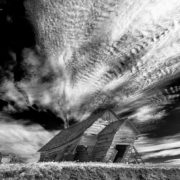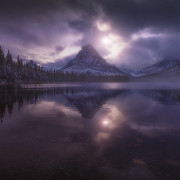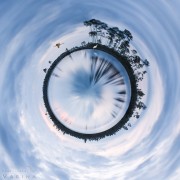Why use Dodging and Burning for Landscape Photography?
Dodging and burning? What in the world is that? Chances are you’ve encountered these words before in your photography journey or at least you should have. In my opinion, it’s likely the most transformative concept in photography post-processing. Although this technique can be used in a so many different ways, the most common is likely in portrait and landscape photography, especially in the fine art world. If you aren’t a photography history buff, this technique has been used in the dark room for the better part if the last century. Ansel Adams used this technique to great effect in his work, although the process is woefully different these days.
What is Dodging and Burning?
You may be wondering what this age-old, wondrous technique actually is, right? Dodging and burning in short, simply means to brighten and/or darken. To brighten or enhance the light in certain parts of an image to draw more attention, or darkening or diminishing certain parts of the image to take attention away. You could see how this might be useful in portrait work, like make-up by contouring pleasant features. Back when it was done in film processing, it meant exposing certain parts of a slide or negative longer than others, or for less time than other parts (an incredibly difficult process).
In this article, I discuss just a few of the benefits of dodging and burning. But before we get into that, shift your thinking a bit. Rather than simply a technique to brighten or darken, consider the process as a technique to enhance or diminish instead. Once you begin to think of it that way, you may realize that there’s far more ways to do that than just brightening and darkening. There are also many, many ways to dodge and burn things in post-processing.
There are many ways and many different types of software to do this but, for the sake of this article and a majority of the digital photography world, I refer to Adobe Lightroom and Photoshop in the following tips.
#1: Controlling the Viewer’s Attention
As mentioned above, the most broad, and obvious benefit to dodging and burning is controlling the viewers attention. Enhancing the light in areas to which you’d like to draw more attention to can help guide the viewers eye, like a hand in the dark. Burning areas you may want less attention drawn to can act like bumpers, helping the dodging along. At least this is how I think of it and how I apply the concept to my work.
Take the following image for example. I used dodging and burning to highlight the beautiful flow of water. I also created walls to contain the eye ensuring that the stream is what the eye follows. On a macro level, I dodged and burned the texture in the water to give the eye something to study as it moves through. Dodging and burning can be used on a large, or almost micro scale. And a good, thoughtful combination of both and everything in between can really help add a lot of POP to your images.
#2: Creating Balance in Compositions
You can dodge and burn with contrast, adding it selectively just where you want it. This can be incredibly helpful in creating balance in compositions. This is especially true where a heavy shadow or strong highlight is causing your image to feel off or heavy in one area.
As in the image above, a few of the darker tones were heavier than others. Burning the lighter ones to match allowed me to enhance detail and balance the image helping it flow. By enhancing the crepuscular highlights along the edges of the dunes, I was able to create more separation, helping along the layers. I also used dodging to enhance the blown sand on the dunes helping the atmosphere. Darkening the top, and bottom edges using burning allowed me to ‘cap off’ the frame keeping the viewer right where I want them!
#3: Enriching Tones and Colors
You can enrich tones and colors, thusly enhancing saturation or preventing desaturation during the brightening process by dodging or burning with color. However, subtlety is key; things can easily become too strong or obvious. Using selections or masks and a deft hand with your mouse or Wacom tablet is of high importance.
In the image below, I used color dodging to enhance the strip of warm light hitting the foothills and valley illuminating some thick, low fog. Dodging it almost gave the appearance of fire burning below the cool mountain peaks. Other methods of dodging were used to enhance soft light hitting the main peaks of Mount Whitney. And other methods of burning to darken the rock outcrop in the bottom part of the image closest to us. I also used dodging and burning techniques to showcase the vulture flying through the frame.
#4: Creating a More Dynamic, Interesting Photo
All of these things have sort of been spoken about as separate benefits but in all, they create a more dynamic and interesting image. I am not sure one method or technique trumps another. But, all of them used harmoniously cannot be rivaled in terms of impact.
Like with anything though, there is such thing as too much. This takes a lot of time and practice to understand and refine. In my latest video regarding dodging and burning I walk you through four methods of dodging and burning using Lightroom, Adobe camera Raw and Photoshop.
I also give clarity to the methods and techniques I use in my images to create high impact and vibrance. How I do it, why I do it, and how I keep it subtle. Subtlety is key with anything in post-processing. Obviously I am a fan of bold, colorful images so my subtle may not be the same as the next photographer’s but in my work I try to make ‘subtle’ adjustments that, combined with others or built upon, create huge impact.
In the example above I used dodging and burning to de-clutter the scene. I highlighted its interests and pushed the distracting bits into the shadows. Together, this gives the viewer one direction to move… forward.
I hope you have enjoyed this article about the benefits of dodging and burning. For a more in-depth look at these concepts and techniques, take look at my Dodging and Burning for Landscape Photography Tutorial. Here are a few landscape photos from my Dodging and Burning tutorial.
Have you used Dodging and Burning in your post processing workflow for landscape photography? If so feel free to share your thought on the subject in the comments below:


